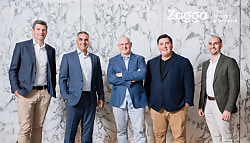BT Investment Management (BTIM) is unlikely to add all of boutique investment firm JO Hambro's funds to retail platforms, but instead is planning to reserve the funds for institutional investors and Westpac's private clients business.
JO Hambro is strict on the capacity limits it has set itself, while the fees for the products are also higher than those of the average funds manager.
"We are going to be very careful with which channels we are going to use, particular on the higher margin products, because of capacity," BTIM chief executive officer Emilio Gonzalez told Investor Weekly.
"With a limited capacity you can't have a mass market out there. So we are more likely to target certain groups, certain distribution channels where we feel we are offering something unique."
Gonzalez said BTIM's acquisition of JO Hambro was not based on distribution opportunities.
"We still have to put our minds together. In terms of what we will bring to the table with JO Hambro is to distribute their product to the Australian marketplace," he said.
"That was not the basis behind the deal, but clearly it is something that we can leverage off, particularly in the superannuation market.
"There is opportunity in terms of which products will be attractive and I think emerging markets is an attractive one. But we will do that in the context of getting the maximum price for the JO Hambro products because they are sold across the world."
JO Hambro has been running a global equity strategy for about a decade. It has a maximum capacity of GBP5 billion in funds under management (FUM), while the firm caps its emerging market strategy at about GBP3 billion.
In total, the firm runs 15 strategies with about GBP7.1 billion in FUM.
The firm has an average revenue margin across the business of 62 basis points, but this does not include performance fees.
Gonzalez said he had actively been searching for the acquisition of a global equity manager to diversify the revenues of BTIM, which is majority-owned by Westpac.
"It was always going to be overseas and [JO Hambro] was the right size," he said.
"We always said that for us to have the appropriate level of diversification across the business [we needed] somewhere between $5 billion to $15 billion in FUM."
The combination of the business will result in a portfolio of 30 per cent in Australian equities, 31 per cent in international equities and 39 per cent in cash, fixed income and other assets.
For JO Hambro the deal made sense because it had to find a new home for a large slice of its equity.
"The founding shareholders, who founded the business over 10 years ago, have no longer been involved with the business," JO Hambro group chief executive Gavin Rochussen said.
"They haven't been involved for three or four years, but they held 70-odd per cent of the equity.
"So you get to that point with any new business as the business is growing: you need a transition of shareholding. We reached that stage.
"I joined three years ago and part of what I had to do was actually manage that transition, so I always knew that I had to grow our business, create shareholder value and then find the right long-term partner so that founding shareholders could exit.
"Emilio approached us late last year, and we realised we had a lot of similarities: our culture, how we incentivise, how we retain, and things progressed from there."
JO Hambro currently has one institutional client in Australia, Colonial First State, which has an allocation to the manager in its multi-manager fund range, FirstChoice.







